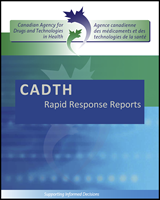Except where otherwise noted, this work is distributed under the terms of a Creative Commons Attribution-NonCommercial- NoDerivatives 4.0 International licence (CC BY-NC-ND), a copy of which is available at http://creativecommons.org/licenses/by-nc-nd/4.0/
NCBI Bookshelf. A service of the National Library of Medicine, National Institutes of Health.
Dupuytren’s contracture is a progressive condition in which connective cords form, thicken, and shorten (typically in the connective tissue of the palmar fascia), causing permanent flexion contractures of joints and of one or more fingers. The metacarpophalangeal joint (MCP) and the proximal interphalangeal joint (PIP) are most often affected. Eventually, the contractures lead to hand deformity and impaired hand function, and potentially reduced quality of life for the affected individual. Dupuytren’s contracture may present as an unilateral or bilateral disease. The primary cause of Dupuytren’s contracture has yet to be determined, although there is a strong hereditary component.
There is no cure for Dupuytren’s contracture and only a handful of treatment options exist. The most commonly used treatments are surgery (partial or total fasciectomy), fasciotomy, collagenase clostridium histolyticum injections, or corticosteroid injections. Surgery (especially open, partial fasciectomy [OPF]) is the mainstay treatment option, which is recommended for functionally impaired patients with contractures more than 30 degrees of the MCP joint. There is some disagreement as to when surgery is recommended when PIP joints are affected.
There are two types of fasciotomy: open fasciotomy where the surgeon uses a scalpel to section the cords, and closed fasciotomy or percutaneous needle fasciotomy (also called aponeurotomy [PNF]), which involves a minimally invasive technique whereby a small needle is used to weaken and manipulate the cords. With percutaneous needle fasciotomy, the cords eventually break after being weakened by means of passive finger extension.
Collagenase clostridium histolyticum (CCH) has recently been approved by Health Canada as treatment for Dupuytren’s contracture in adults with a palpable cord. The monthly injection of CCH (up to three injections per Dupuytren’s cord) hydrolyzes the collagen in the Dupuytren’s cord, thereby resulting in enzymatic disruption of the cord and release of the contracture.
The objective of this report is to conduct a review of the clinical evidence regarding open and closed fasciotomy for treating Dupuytren’s contracture compared with fasciectomy and collagenase clostridium histolyticum. The cost-effectiveness of the fasciotomy techniques will also be reviewed. This is an update to a previous Rapid Response report.
Contents
- CONTEXT AND POLICY ISSUES
- RESEARCH QUESTIONS
- KEY FINDINGS
- METHODS
- SUMMARY OF EVIDENCE
- LIMITATIONS
- CONCLUSIONS AND IMPLICATIONS FOR DECISION OR POLICY MAKING
- REFERENCES
- APPENDIX 1 Selection of Included Studies
- APPENDIX 2 Summary of Study Characteristics
- APPENDIX 3 Summary of Critical Appraisal
- APPENDIX 4 Summary of Findings
- NLM CatalogRelated NLM Catalog Entries
- Dupuytren's Contracture Recurrence and Treatment Following Collagenase Clostridium Histolyticum Injection: A Longitudinal Assessment in a Veteran Population.[Mil Med. 2023]Dupuytren's Contracture Recurrence and Treatment Following Collagenase Clostridium Histolyticum Injection: A Longitudinal Assessment in a Veteran Population.Zarb RM, Graf AR, Talhelm JE, Stehr RC, Sanger JR, Matloub HS, Daley RA. Mil Med. 2023 Aug 29; 188(9-10):e2975-e2981.
- A feasibility study investigating the acceptability and design of a multicentre randomised controlled trial of needle fasciotomy versus limited fasciectomy for the treatment of Dupuytren's contractures of the fingers (HAND-1): study protocol for a randomised controlled trial.[Trials. 2017]A feasibility study investigating the acceptability and design of a multicentre randomised controlled trial of needle fasciotomy versus limited fasciectomy for the treatment of Dupuytren's contractures of the fingers (HAND-1): study protocol for a randomised controlled trial.Harrison E, Tan W, Mills N, Karantana A, Sprange K, Duley L, Elliott D, Blazeby J, Hollingworth W, Montgomery AA, et al. Trials. 2017 Aug 25; 18(1):392. Epub 2017 Aug 25.
- Comparison of Treatment Outcomes after Collagenase Injection and Percutaneous Needle Fasciotomy for Dupuytren's Contracture: Objective and Subjective Comparisons with a 3-Year Follow-Up.[Plast Reconstr Surg. 2020]Comparison of Treatment Outcomes after Collagenase Injection and Percutaneous Needle Fasciotomy for Dupuytren's Contracture: Objective and Subjective Comparisons with a 3-Year Follow-Up.Abe Y. Plast Reconstr Surg. 2020 Jun; 145(6):1464-1474.
- Review Collagenase clostridium histolyticum for the treatment of Dupuytren's contracture: systematic review and economic evaluation.[Health Technol Assess. 2015]Review Collagenase clostridium histolyticum for the treatment of Dupuytren's contracture: systematic review and economic evaluation.Brazzelli M, Cruickshank M, Tassie E, McNamee P, Robertson C, Elders A, Fraser C, Hernandez R, Lawrie D, Ramsay C. Health Technol Assess. 2015 Oct; 19(90):1-202.
- Review Cost-effectiveness in the management of Dupuytren's contracture. A Canadian cost-utility analysis of current and future management strategies.[Bone Joint J. 2013]Review Cost-effectiveness in the management of Dupuytren's contracture. A Canadian cost-utility analysis of current and future management strategies.Baltzer H, Binhammer PA. Bone Joint J. 2013 Aug; 95-B(8):1094-100.
- Needle or Open Fasciotomy for Dupuytren’s Contracture: A Review of the Comparati...Needle or Open Fasciotomy for Dupuytren’s Contracture: A Review of the Comparative Efficacy, Safety, and Cost-Effectiveness – An Update
Your browsing activity is empty.
Activity recording is turned off.
See more...
